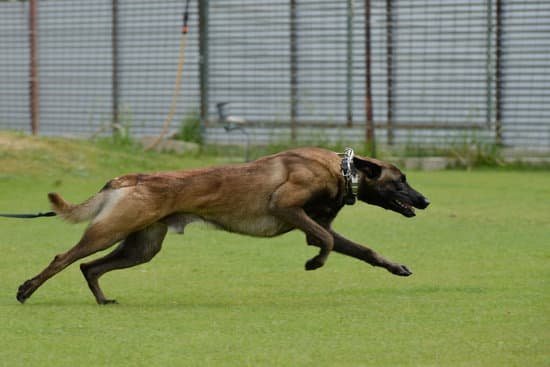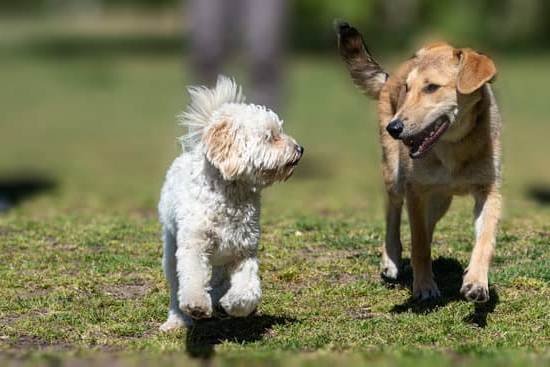Looking to enhance your dog’s training experience? Clicker training dogs is an effective and positive reinforcement-based method that has gained popularity among pet owners and trainers alike. This technique provides a clear and precise way to communicate with your furry friend, making the learning process more efficient and enjoyable for both of you.
Clicker training is based on the principle of associating a clicking sound with a reward, usually a tasty treat. This method helps in marking the exact moment when your dog performs the desired behavior, making it easier for them to understand what they’re being rewarded for. By using a clicker in their training, you can effectively communicate with your canine companion without any ambiguity.
In this article, we will delve into the basics of clicker training, how it works for dogs, its numerous benefits, as well as provide a step-by-step guide to help you kickstart this training method with your dog. Additionally, we will discuss common mistakes to avoid, troubleshooting challenges that may arise during clicker training sessions, and share advanced techniques for those who are ready to take their dog’s training to the next level.
So let’s explore the world of clicker training for dogs and set our furry friends up for success.
Understanding the Basics of Clicker Training
Clicker training dogs is a popular and effective method of positive reinforcement training that focuses on building a strong bond between the dog and the trainer. Understanding the basics of clicker training is essential for both new and experienced dog owners who want to effectively train their furry companions. Clicker training involves using a small hand-held device called a clicker, which makes a distinct clicking sound when pressed.
The basic concept behind clicker training is that the clicking sound functions as a marker to signal to the dog exactly when they have performed the desired behavior. This allows for clear communication between the trainer and the dog, making it easier for the dog to understand what is being asked of them. The use of positive reinforcement, such as treats or praise, immediately after the click reinforces the behavior, making it more likely to be repeated in the future.
One of the key benefits of clicker training for dogs is its ability to shape behaviors in a precise and consistent manner. Without clear communication, it can be difficult for dogs to understand what is being asked of them. With clicker training, dogs are able to quickly learn which actions lead to receiving rewards, helping them learn new behaviors and commands more effectively.
Additionally, clicker training also helps build trust and confidence in dogs, as they are actively participating in their own learning process. By understanding these basics, dog owners can set themselves up for success when implementing clicker training with their furry companions.
How Clicker Training Works for Dogs
Clicker training works for dogs by utilizing the principles of operant conditioning, a type of learning in which behaviors are strengthened or weakened through the consequences that follow them. The clicker itself acts as a marker to indicate the exact moment your dog has performed the desired behavior, making it easier for your pet to understand what they are being rewarded for.
This method is based on positive reinforcement, which means that good behavior is encouraged and reinforced with rewards, such as treats or praise.
Key Components of Clicker Training
- Marker: The distinct sound of the clicker serves as a marker to pinpoint the exact moment your dog has done something right.
- Reward: After the click, a reward (such as a treat) is given to reinforce the behavior.
- Consistency: Timing and consistency are crucial in clicker training to ensure that your dog associates the click with the correct behavior.
How Dogs Learn Through Clicker Training
In clicker training, dogs learn through associations and consequences. The sound of the click becomes associated with a positive outcome, creating an incentive for them to repeat the action. Over time, this method teaches dogs to actively engage in problem-solving and learn new behaviors.
Advantages of Clicker Training
- Precision: Clickers allow for precise timing in marking desirable behaviors.
- Clear Communication: The consistent sound of the click provides clear communication between you and your dog.
- Increased Focus: Clicker training encourages dogs to be more attentive and focused during training sessions.
By understanding how clicker training works for dogs and its key components, you can effectively use this method to train your furry friend and strengthen your bond with them.
Benefits of Clicker Training for Dogs
Clicker training for dogs has gained popularity in recent years, and for good reason. This positive reinforcement training method has numerous benefits for both dogs and their owners. One of the main advantages of clicker training is that it allows for clear and precise communication between the human and the dog.
The clicker serves as a marker to indicate the exact moment the desired behavior is performed, making it easier for the dog to understand what is being rewarded. This leads to faster learning and a stronger bond between dog and owner.
Another benefit of clicker training for dogs is that it can be used to teach a wide variety of behaviors, from basic obedience commands to more complex tricks and tasks. The versatility of this training method makes it suitable for dogs of all ages, breeds, and skill levels. In addition, clicker training is a force-free and gentle approach to shaping a dog’s behavior, making it an ideal choice for sensitive or fearful dogs.
Furthermore, clicker training provides mental stimulation for dogs, which is essential for their overall well-being. It encourages them to think, problem-solve, and learn new things, helping to prevent boredom and behavioral issues often associated with lack of mental exercise. Overall, the benefits of clicker training for dogs are vast, making it a highly effective and enjoyable way to train our canine companions.
| Benefits | Details |
|---|---|
| Precise Communication | Clear marking of desired behaviors with the clicker |
| Versatility | Suitable for dogs of all ages, breeds, and skill levels |
| Mental Stimulation | Prevents boredom and encourages problem-solving in dogs |
Choosing the Right Clicker for Training
When it comes to clicker training dogs, choosing the right clicker is essential for effective training. The clicker serves as a marker to indicate to your dog that they have performed the desired behavior. There are various types of clickers available on the market, so it’s important to select one that suits both you and your dog’s needs.
One popular option is the traditional box clicker, which produces a distinct clicking sound when pressed. This type of clicker is easy to use and has been a staple in clicker training for many years. Another choice is the button clicker, which is smaller and can be easily operated with just one hand. There are also electronic clickers that emit a different sound or even vibration, which can be beneficial for dogs with auditory sensitivities.
Consider your dog’s temperament and sensitivity when choosing a clicker. If your dog is easily startled by loud noises, opt for a quieter clicker or one with adjustable volume settings. Additionally, choose a clicker that feels comfortable in your hand and is easy to operate during training sessions.
Before you start using a clicker, it’s essential to condition your dog to associate the clicking sound with positive reinforcement. Take the time to introduce the clicker to your dog gradually, pairing each click with a tasty treat or praise. By doing so, your dog will learn to recognize the sound of the clicker as a signal for good behavior and rewards, paving the way for successful clicker training sessions.
Step-by-Step Guide to Start Clicker Training Your Dog
Now that you understand the basics of clicker training dogs and have chosen the right clicker for your training sessions, it’s time to start implementing this positive reinforcement method with your furry friend. Here is a step-by-step guide to help you get started:
- Introduce your dog to the clicker: Before starting any training, it’s essential to introduce your dog to the sound of the clicker. Simply click and immediately give a treat to create a positive association with the clicking sound.
- Decide on a behavior to train: Choose a simple behavior or command to start with, such as sitting or shaking hands. It’s important to begin with something easy for your dog to understand.
- Mark and reward desired behavior: When your dog performs the desired behavior, use the clicker to mark the moment it happens. Follow the click immediately with a treat or reward to reinforce the behavior.
Once your dog understands how clicker training works and is responding well, you can gradually start introducing more advanced behaviors and commands using this method. With patience and consistency, clicker training can be an effective way to build a strong bond with your dog while teaching them new skills in a positive and rewarding way.
Common Mistakes to Avoid in Clicker Training
When it comes to clicker training dogs, there are a few common mistakes that pet owners should be aware of in order to ensure the training process is successful. Avoiding these mistakes can help in creating a positive and effective learning experience for your furry friend.
Using the Clicker Inconsistently
One common mistake in clicker training dogs is using the clicker inconsistently. It’s important to have a consistent and clear signal for your dog to understand when they have performed the desired behavior. Inconsistency can lead to confusion and frustration for your pet, ultimately hindering their progress in training. Make sure to always use the clicker at the exact moment your dog performs the desired behavior, and follow it up with a reward or treat.
Skipping Basic Training Steps
Another mistake is skipping basic training steps in favor of more advanced techniques. It’s crucial to build a strong foundation by starting with simple commands before moving on to more complex tricks or behaviors. Skipping basic steps can lead to confusion and frustration for both you and your dog. Take the time to master each step of training before progressing to more advanced techniques.
Expecting Instant Results
Many pet owners make the mistake of expecting instant results from clicker training. Training takes time, patience, and consistency. It’s important to understand that every dog learns at their own pace, and some may take longer than others to grasp certain concepts. Set realistic expectations and be prepared to invest time and effort into the training process. Remember that building a strong bond with your dog through positive reinforcement is key to successful clicker training.
By being aware of these common mistakes and taking proactive measures to avoid them, you can set yourself up for success in clicker training your dog. Consistency, patience, and understanding are key components in creating a positive learning experience for your pet through clicker training.
Troubleshooting Clicker Training Challenges
Lack of Consistency
Consistency is key in clicker training dogs. One common challenge that trainers face is the lack of consistency in using the clicker during training sessions. If the clicker is not consistently used to mark desired behaviors, it can confuse the dog and hinder the training process.
It’s important for trainers to ensure that they are clicking at the exact moment the desired behavior occurs, and not sporadically throughout the session. Consistent use of the clicker will help reinforce good behavior and create a clear link between the action and the reward.
Timing Issues
Another common challenge in clicker training dogs is timing issues. The click should be made at the precise moment that the dog performs the desired behavior, and if this timing is off, it can lead to confusion for the dog. Trainers may find it helpful to practice their timing by clicking and treating with precision when their dog isn’t present, or by working with a professional trainer who can provide guidance on perfecting this essential skill.
Overuse of Clicker
Some trainers may inadvertently overuse the clicker during training sessions, leading to desensitization in their dogs. Clicking too frequently or inconsistently can reduce the effectiveness of the clicker as a marker for good behavior. Trainers should be mindful of when they use the clicker, ensuring that it’s only being used to mark specific actions that they want to reinforce in their dogs. This will maintain its value as a positive reinforcement tool for training success.
Advanced Clicker Training Techniques for Dogs
Once you and your dog have mastered the basics of clicker training, it’s time to move on to more advanced techniques. One technique is shaping, which involves breaking down a desired behavior into smaller steps and reinforcing each step until the full behavior is achieved.
For example, if you want your dog to weave through poles, you can start by clicking and rewarding when your dog looks at the first pole, then when they take a step towards it, and so on until they complete the entire weaving behavior.
Another advanced technique is targeting, where you train your dog to touch a specific object with a body part such as their nose or paw. This can be useful for teaching complex tricks or behaviors. For instance, you can use targeting to train your dog to turn off light switches, close doors, or retrieve specific items.
In addition to shaping and targeting, there are also advanced clicker training methods that focus on increasing the duration or distance of behaviors, adding distractions, or combining multiple behaviors into a sequence. These techniques require patience and consistency but can lead to impressive and enjoyable results for both you and your dog when mastered.
Overall, advanced clicker training techniques allow you to continue challenging and engaging your dog’s mind while strengthening your bond with them through positive reinforcement. By gradually building on the foundation of basic clicker training principles, you can unlock your dog’s full potential and enjoy even more fulfilling training experiences together.
Success Stories of Clicker Training Dogs
In conclusion, clicker training has proven to be a highly effective and rewarding method for teaching and reinforcing behaviors in dogs. The success stories of clicker training dogs are a testament to the power of this positive reinforcement technique. From basic obedience commands to advanced tricks and behaviors, clicker training has been shown to produce impressive results in dogs of all ages, breeds, and backgrounds.
One of the key factors contributing to the success of clicker training is its ability to create clear communication between the handler and the dog. By using a distinct sound (the click) to mark desired behaviors, followed by a reward, dogs quickly learn what is expected of them. This clarity facilitates learning and behavior modification, leading to successful outcomes in training.
Furthermore, clicker training fosters a strong bond between dogs and their handlers. The positive reinforcement aspect of clicker training not only motivates dogs to learn and perform behaviors but also builds trust and cooperation between the dog and the trainer.
Many success stories highlight the deepened relationship between dogs and their owners as a result of implementing clicker training into their daily routines. As more trainers and dog owners continue to experience these positive results, the popularity of clicker training continues to grow within the canine community.
Frequently Asked Questions
Is Using a Clicker Good for Dog Training?
Using a clicker can be very effective for dog training. It provides a clear and consistent way to communicate with your dog, marking the exact moment when they have performed the desired behavior.
What Does a Clicker Do to a Dog?
When a dog hears the clicker, it signals to them that they have done something right and that a reward is coming. This creates a positive association with the behavior and helps the dog understand what is expected of them.
How Do You Clicker Train a Dog for Beginners?
To start clicker training a dog, you first need to pair the sound of the clicker with treats so that the dog understands that the click means they will get a reward. Then, you can use the clicker to mark and reinforce desired behaviors, gradually shaping more complex actions as the training progresses.

Welcome to the blog! I am a professional dog trainer and have been working with dogs for many years. In this blog, I will be discussing various topics related to dog training, including tips, tricks, and advice. I hope you find this information helpful and informative. Thanks for reading!





